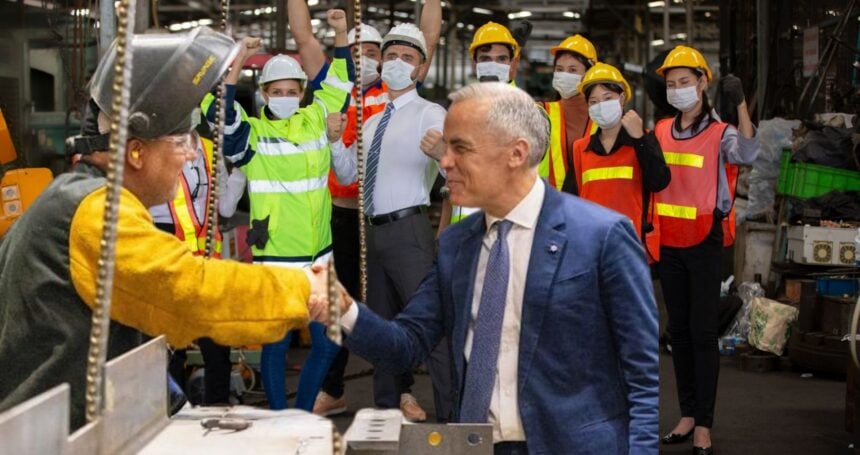The federal and Ontario governments moved to shore up Canada’s steel industry, unveiling a combined C$500 million package for Algoma Steel in Sault Ste. Marie.
Ottawa said it agreed to a binding term sheet that would provide a C$400 million loan through its Large Enterprise Tariff Loan facility, while the province plans to add C$100 million on the same terms.
The money is meant to help the producer continue operating, reduce reliance on the U.S. market, and limit disruption for its workforce, according to a federal news release published on September 29, 2025.
The Department of Finance said more than 85% of Canada’s trade remains tariff free, yet steel has been hit by rising trade frictions, which the program is designed to cushion.
Ottawa created the C$10 billion Large Enterprise Tariff Loan facility in March to support companies facing actual or potential tariffs and countermeasures.
The program was updated over the summer to expand eligibility and lower borrowing costs for steel firms, including a reduction in the minimum annual revenue threshold to C$150 million, a smaller minimum loan size of C$30 million, a longer maturity of up to 7 years, and a requirement to prioritize worker retention.
Those tweaks are intended to make the credit more accessible to manufacturers navigating shifting trade rules and higher financing costs.
Algoma employs roughly 2,500 people and supplies steel to Canadian industries from construction to energy and defense. The company is a key employer in Northern Ontario and a major contributor to regional supply chains.
Patty Hajdu, Minister of Jobs and Families, said in a press release, “Steel is the backbone of a strong Canada.” Federal officials framed the loans as a bridge for a sector that anchors industrial capacity and supports essential infrastructure.
Access to lower cost, longer dated financing can stabilize operations during periods of trade uncertainty and volatile demand.
The loan terms also align with Ottawa’s push to preserve employment, a condition that matters for communities built around single large employers.
The province’s commitment to match federal terms signals a coordinated approach that reduces refinancing risk and sends a clearer signal to creditors and suppliers.
The government’s tariff loan facility has increasingly become a tool to manage fallout from rapid changes in cross border policy.
In recent weeks, domestic coverage highlighted how Algoma Steel secured 500 million in government loans as part of a broader effort to shield strategic manufacturing.
Ottawa has also detailed a tariff relief program for small businesses in British Columbia, reflecting the wider economic ripple effects of trade actions on regional economies.
South of the border, new tariff measures on consumer goods have added to the uncertainty that Canadian exporters must price into supply contracts and investment plans, as seen when the U.S. announced new tariffs on home goods.




















